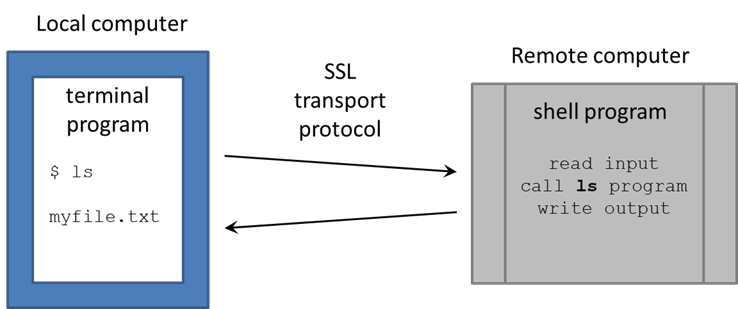| Table of Contents |
|---|
...
| Expand | ||
|---|---|---|
| ||
If your Windows version does not have ssh in Command Prompt or PowerShell:
More advanced options for those who want a full Linux environment on their Windows system:
|
From now on, when we refer to "Terminal", it is either the Mac/Linux Terminal program, Windows Command Prompt or PowerShell, or the PuTTY program.
...
There are many shell programs available in Linux, but the default is bash (Bourne-again shellBourne-again shell).
The Terminal is pretty "dumb" – just sending what you type over its secure sockets layer (SSL) connection to TACC, then displaying the text sent back by the shell. The real work is being done on the remote computer, by executable programs called by the bash shell (also called commands, since you call them on the command line).
About the command line
Read more about the command line and commands on our Linux fundamentals page:
- The bash shell REPL and commands
- Linux fundamentals: Getting help
- Linux fundamentals: Literal characters and metacharacters
- About command line input
Setting up your environment
...
| Tip |
|---|
$WORK and $SCRATCH are TACC environment variables that refer to your Work and Scratch file system areas (– more on these file system areas soon. (Read more about Environment variables). |
| Expand | |||||||
|---|---|---|---|---|---|---|---|
| |||||||
The ln -s command creates a symbolic link, a shortcut to the linked file or directory.
Want to know where a link points to? Use ls with the -l (long listing) option.
|
Anchor
...
They have a name (like BIWORK above) and a value (the value of $BIWORK is the pathname of the shared /work/projects/BioITeam directory). See More on environment variables.
To see the value of an environment variable, use the echo command, then the variable name after a dollar sign ( $ ):
...
| Code Block | ||
|---|---|---|
| ||
ls $CORENGS |
(Read more about Environment variables)
Shell completion with Tab
...
